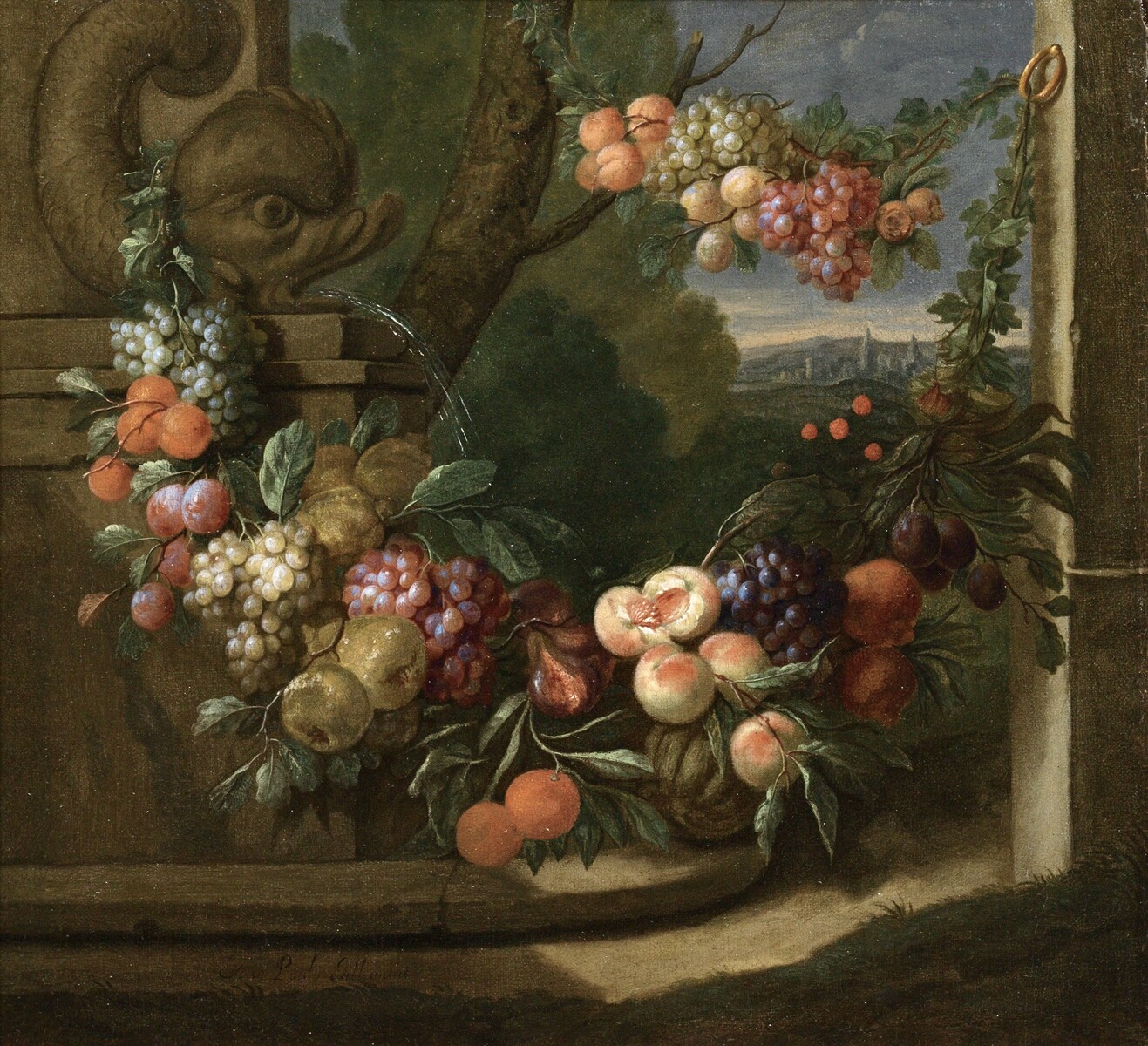A fountain with a dolphin decorated with a swag of fruit
Oil on canvas : 40,5 X 44,5 cm
Signed lower left “Joan Paulo Gillemans”
Frame : 44,3 X 48,3 cm
Our painting is recorded at the RKD, The Hague, Number 1001208760
"All paintings are fully documented with texts and photographs of comparative items. All this information is removed from our website once the painting is sold".

In short
Gillemans’ garlands of flowers were influenced by another Antwerp painter, Joris van Son. He himself strongly influenced his own son Jan Pauwel II Gillemans, who actually painted the same subject, in a more Classicist fashion in 1673.
Our painting dates, judging by the spelling of the signature, from the last decades of our painter’s life (between the late 1650’s and his death circa 1675).
About Jan Pauwel Gillemans I
Flemish still life painter
Antwerp 1618 – after 12 Aug 1675 Antwerp
Son of a goldsmith from Liège; he learned the goldsmith craft from his father.
Member of the Painter’s Guild of Saint Luke in Antwerp from the year 1647-48 onwards.
His still lifes have generally a dark background, reflecting the influence of Jan Davidsz. de Heem.
His garlands of fruit, however, recall those of Joris van Son.
He painted mostly on canvas, occasionally also on oak panels and on copper plates.
He regularly signed his paintings, but far from always, at first with “J.P. Gillemans”, from the late 1650-ies onwards often with “Joan Paolo Gillemans”.
He married in 1648, the couple had eight children; one of them Jan Pauwel II also became a painter. The later works of Jan Pauwel Gillemans the Elder are sometimes difficult to distinguish from the early works of his son, the Younger. Generally speaking, the works of Jan Pauwel II have a less forceful and more decorative character than those of his father, whose colour palette was more limited.
Paintings by Jan Gillemans the Elder can be found in the following museums :
- Belgium, Royal Museum of Fine Arts in Brussels
- Great-Britain, Victoria and Albert Museum in London
- France, Musée des Beaux-Arts in Lille
- Holland, Museum Boymans – van Beuningen in Rotterdam
- Germany, Staatsgalerie in Bamberg, Staatliche Museum in Schwerin and Museum der Bildende Künste in Leipzig
- Austria, Tiroler Landesmuseum Ferdinandeum in Innsbruck and Steiermarksiches Landesmuseum Joanneum in Graz
- Italy, Palazzo Pitti in Florence
- Russia, The Hermitage in Saint Petersburg
- Poland, Muzeum Narodowe
Why should you buy this painting?
Because this beautifully painted swag of fruit is not linked with an annoying biblical subject.
